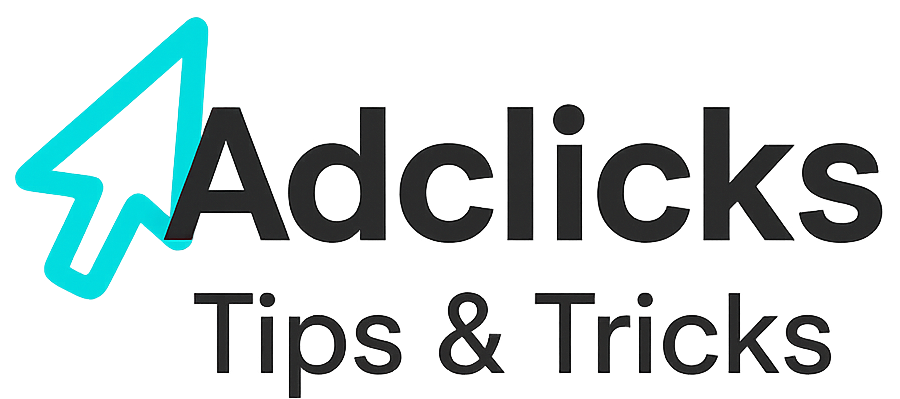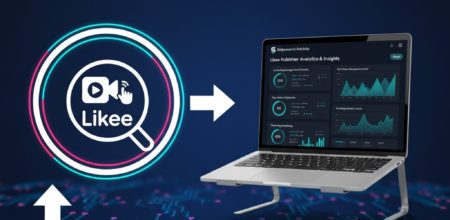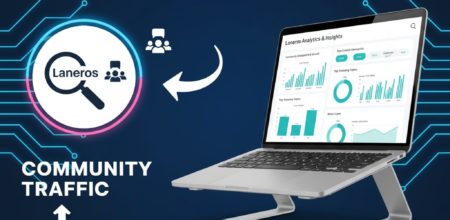Blogger is a Google-owned publishing platform that hosts blogs on the Blogspot domain and enables long-form, time-stamped posts that are indexed and discoverable across the open web. Its core workflow is straightforward: create a blog, publish posts, and syndicate via feeds, with optional custom domains for branding. This makes Blogger less like a closed social app and more like an open network where posts travel through search, feeds, and inter-blog links.
Blogs are accessible as subdomains of blogspot.com or mapped to a custom domain, and the service’s architecture has evolved away from legacy FTP publishing and country-specific redirects. Google hosts the content and supports direct access via blogspot.com, while older ccTLD redirections were discontinued in 2018, consolidating visibility. The result is a global surface where language and locality are expressed by content rather than domain suffixes.
For publishers, this architecture defines how traffic moves: posts gain compounding discoverability via search and feeds, and inter-blog references behave like social edges. When a post answers a precise query and earns links from other Blogger sites, referral patterns accelerate and sustain. When that traffic lands on a destination built for depth, integrating a measured monetization layer through Adclicks preserves trust without interrupting reading flow.
Origins and evolution
Blogger was launched by Pyra Labs in 1999 and acquired by Google in 2003, a moment that scaled the platform and embedded it into Google’s infrastructure. Early user growth and the promise of search-addressable, user-generated content made the acquisition strategically important. Subsequent improvements moved hosting to Google servers, with integrated image handling and a simplified authoring experience for non-technical users.
The mid-2000s upgrades introduced labels, private posting, multi-author controls, and a drag-and-drop layout system that widened participation and standardized navigation patterns readers still expect today. These changes mattered culturally because they taught audiences to scan labels, feeds, and archive structures that persist across the Blogger ecosystem. A publisher who mirrors these conventions on their own site reduces friction and increases session depth from Blogger-origin referrals.
Blogger also experimented with social adjacency through following features, Friend Connect, and OpenID authentication for comments, which helped establish a lightweight identity grammar without gatekeeping content behind closed walls. Those norms hardened expectations around open syndication and portable readership, which is precisely why links to external destinations remain normal behaviour for Blogger users. That portability is compatible with a restrained monetization layer; you can carry interested readers to focused landing pages and analyze CPC/CPM against other channels while keeping the content-first tone intact.
Traffic picture and discovery
In August 2025, Similarweb estimates blogger.com at around 26.8 million monthly visits, with roughly 6 minutes 59 seconds average visit duration, 5.79 pages per visit, and a 46.56% bounce rate. Direct is the dominant channel, followed by organic search, reflecting an ecosystem where creators return to the dashboard and readers locate posts via queries and links. Social referrals to blogger.com are led by YouTube, with X and Facebook contributing smaller shares.
The top desktop countries sending traffic to blogger.com include the United States, India, Brazil, Spain, and Indonesia, suggesting a mixed linguistic footprint and a blend of long-standing blog cultures with new search-driven discovery. For content intended to attract Blogger readers, this mix implies that bilingual or region-specific versions can materially change engagement, especially for evergreen how-to, entertainment, or news-adjacent topics.
The diffuse nature of blogspot subdomains means content consumption often happens on individual blogs rather than the blogger.com hub. This fragmentation is an advantage for niche publishers because they can participate in a web of topical interlinks and citations. When that graph points toward a canonical explainer or research page on your site, readers arrive primed to continue. Aligning those pages with a light touch from Adclicks maintains momentum while you evaluate lift by geography and referrer quality, and it provides a benchmark for CPC/CPM against your other organic sources.
Audience and interests
Similarweb’s audience panel for blogger.com skews toward ages 25–34 and roughly 61% male, with interest clusters in news and media, developer software, and some adult content categories that reflect the breadth of the open web. Practically, this signals readers who are comfortable navigating longer pages, scanning labels, and following citations, which is distinct from short-form social apps. The same panel shows other visited sites that include Google services and file hosts, consistent with a utility-driven browsing style.
The user’s mental model is that a post title should match a question, the opening paragraph should summarize the answer, and labels or tags should route to related depth. On Blogger, this pattern is learned behaviour, and it translates off-platform: if your landing page reflects that structure, time on page rises. Demographically, the U.S.–India–Brazil–Spain–Indonesia blend means publishers can target English, Spanish, Portuguese, Bahasa Indonesia, or Hindi contexts based on demand rather than guesswork, then measure response.
Because these readers are used to open linking and feed consumption, acquisition is less about personality and more about utility. A post that resolves a question will be cited, stacked into roundups, and syndicated through feeds. That’s where a restrained monetization layer pays off. If the page reads like a definitive resource and then introduces relevant options via Adclicks, you protect session quality while measuring whether CPC/CPM from Blogger-referred sessions outperform your SEO baseline in the same topic cluster.
Culture and on-platform behavior
Blogger’s cultural DNA is archival and navigational. Readers expect labels to cluster related posts, clear archive paths by month or theme, and predictable feed behavior. When you publish references or excerpts on a Blogger site you control, using labels that mirror the query space, readers who click through are less likely to bounce because the page structure feels familiar. This extends to open syndication, where Atom and RSS settings determine how much of a post travels and how quickly it is discovered.
Comments remain a part of the social fabric, but they are typically utilitarian rather than performative. Tight moderation and clear placement improve signal and reduce spam, and Blogger’s native settings allow pre-approval flows that keep threads readable. Off-platform, you should mirror that ethos by putting sources, dates, and update notes upfront, because Blogger readers are accustomed to fact-checked updates posted in place rather than dramatic rewrites.
This is also why pacing matters. A short digest on Blogger can introduce the definitive guide on your site without feeling like a bait-and-switch if the digest answers a real question first. Once the reader clicks, keep the first screen focused on the answer, move related resources into labelled modules, and let a single well-placed Adclicks unit ride along with the reading flow. Over a thirty-day window, compare CPC/CPM from Blogger-referred sessions to direct and SEO cohorts to decide whether to scale more companion digests or expand translations.
Publisher fit by content type
Evergreen problem-solving content aligns with how Blogger readers discover and share. Tutorials, configuration guides, recipe and craft workflows, book and media commentary, and niche technical fixes all map to the label-and-archive culture. Because top countries include the U.S., India, Brazil, Spain, and Indonesia, localization moves the needle: the same guide reframed for regional software settings or ingredient availability will earn natural interlinks from regional Blogger communities.
Investigative explainers and annotated source collections also perform well. Blogger creators frequently cite and excerpt; if you host a canonical, updated source list on your own site with clear headings and a change log, you become the destination others reference when they assemble topical roundups. The network effect is slow and compounding rather than viral, which suits publishers who prefer steady referral tails over 24-hour spikes.
When your topic justifies it, a parallel post on a Blogger site you control can carry a concise abstract and a link to the long-form piece. The tone should remain informational, with credits and dates. Readers who click expect continuity: the same headline vocabulary, the same table structure, and the same section anchors. Once the structure is familiar, modest calls-to-action and context-matching options via Adclicks can live within the reading path, while CPC/CPM from these sessions is tracked separately to validate the audience-channel fit before you invest in more language variants.
Methods aligned to Blogger mechanics
Syndication settings govern how much of your content flows into feed readers and email digests. Allowing full feeds for index pages but using jump breaks inside posts gives readers enough to evaluate substance while preserving a reason to click for full tables, downloads, or embedded tools. Google’s own guidance on site feeds supports tuning how much content to expose; pairing that with clear canonical tags and fast rendering reduces duplication and keeps the guide’s authority consolidated.
Labels act like facets for readers trained on Blogger conventions. When you mirror those labels as category slugs or on-page filters on your site, the click feels native. This is especially effective for serial content, where each instalment updates a benchmark or method. The navigation effect compounds: a reader arriving from a Blogger roundup lands on the latest edition with links to prior versions, which reduces pogo-sticking and increases completion rates for multi-page sequences.
On pages meant to host arriving readers, keep above-the-fold copy crisp and dated, echo the label taxonomy in your internal navigation, and place a single contextual monetization unit where it does not interrupt reading flow. If the session shows strong scroll and dwell, progressively disclose related tools or downloads and, where appropriate, route to aligned campaigns through Adclicks. This protects the informational tone while giving you a clean read on whether CPC/CPM from Blogger traffic exceeds your baseline for that topic.
Geographic nuance and language planning
Country distribution matters for phrasing and scheduling. With the U.S., India, Brazil, Spain, and Indonesia all among the top traffic sources to blogger.com, region-specific idioms and examples help posts earn citations from local Blogger communities. Portuguese and Spanish variants often outperform direct translations because they can use regional product names or standards; Bahasa Indonesia versions can benefit from screenshots and step sequences, which are popular in that community’s tutorial posts.
Where content depends on policy or device settings, publish the English canonical first with a short note about pending localized editions, then ship regional pages with stabilized terminology and visuals. The update cadence should be recorded on each page; Blogger readers value freshness that is explicit and time-stamped rather than implied. Scheduling can track GMT to simplify your editorial calendar while still meeting peak reading windows in Asia-Pacific and the Americas.
Regional monetization varies by bid density and inventory. You can keep the same structural placement for sponsored units but tune the creative and campaigns per language. When the instrumentation is clean, you can evaluate whether Adclicks sessions from Brazil and Spain outperform India on scroll and interactions, then compare CPC/CPM by region at the end of each editorial cycle to decide which locales merit expansion with deeper series or tool localizations.
Comment, follow, and feed behaviors
Comments on Blogger are configurable, which lets you decide if threads should be pre-moderated, open for a set period, or restricted to registered identities. For publisher pages receiving Blogger referrals, mirror that clarity: one comment channel with posted rules, and visible moderation for older posts. This makes the conversation searchable and manageable, encouraging additional citations from Blogger authors who prefer to point readers to stable discussions.
Following remains a legacy behavior on Blogger, whether public or anonymous, and the reading list keeps audiences connected without algorithmic volatility. Readers who follow expect a consistent cadence and predictable titling; if your abstracts on a Blogger site use the same terms and structure as your destination pages, the perceived quality remains high. Feeds and follow mechanics work best when the summary answers something specific and the click promises tables, code, downloads, or a more complete walkthrough.
Syndication settings determine how much of your content appears off-site and how quickly aggregators pick it up. Exposing full text for evergreen posts builds goodwill; exposing partial content for data-heavy posts can preserve the value of your on-site charts and interactive elements. When readers arrive, keep the answer prominent, cite sources, and let related options appear in-stream. As engagement stabilizes, introduce offers via Adclicks that match the page topic, and audit CPC/CPM for Blogger-referred sessions separately so you understand monetization efficiency relative to your SEO and social baselines.
Measurement, pacing, and scaling
Blogger’s channel mix to the dashboard favors direct and search, and those same patterns echo in how readers discover individual posts across the ecosystem. For a publisher receiving Blogger referrals, the operational objective is to measure session depth, return rate, and assisted conversions rather than chasing vanity metrics. A clean analytics view with referrers preserved and language segments separated will reveal which topics get cited repeatedly in Blogger roundups over quarters rather than days.
Scaling depends on whether the compounding link graph is forming. If you see repeated citations from Blogger posts that use similar labels, consider launching a canonical hub with a change log and anchoring the individual articles to that hub. The strategy rewards meticulous updating and conservative claims. When you publish an updated edition, the hub absorbs the link equity and returns readers to the latest guidance, which matches how Blogger communities share references across time.
With traction established, the monetization layer must remain secondary to utility. Place contextual offers where they do not interrupt scanning, and test language-specific variants that align with local examples. Over monthly and quarterly windows, compare Adclicks revenue per thousand sessions and revenue per click from Blogger-referred traffic to your other organic sources. Treat CPC/CPM not as a headline, but as a validation that the audience-platform fit is strong enough to justify more localization, more structured series, and faster update cycles.
Relevant Links
Support: https://support.snipesearch.co.uk/
FAQ: https://adclick.snipesearch.co.uk/index.php?page=index/faq
Contact Form: https://adclick.snipesearch.co.uk/index.php?page=user/support
Stay Connected:
Snipesocial: https://www.snipesocial.co.uk/pages/snipesearch
Twitter: https://twitter.com/snipesearch_uk
Facebook: https://facebook.com/snipesearch
LinkedIn: https://linkedin.com/company/snipesearch/
YouTube: https://youtube.com/@snipesearch
Rommie Visitor Analytics: https://rommie.net/
StatCounter: https://statcounter.com/




